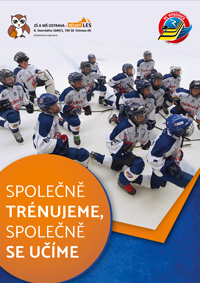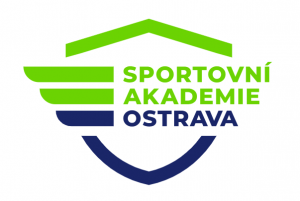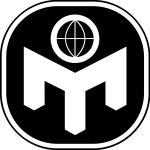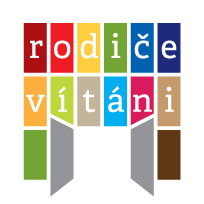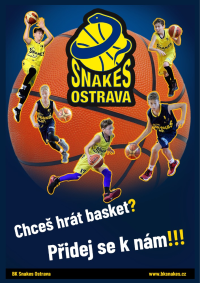596 711 769 | skola@zsdvorskeho.eu | B. Dvorského 1049/1, Ostrava-Bělský Les, 700 30 | IČ: 70978352
↓ menu ↓
Articles about the project Children of a Green World – meeting in Ostrava, 27. 2. – 5. 3. 2023
1st Day of Learning Teaching Training in Ostrava in the Czech Republic
Czech Republic welcomed the partners from Spain, Latvia, Turkey and Greece for the first LTT in the project Children of a Green World. The very first activity was so called “ice-breaker” and its purpose was to introduce the foreign students and teachers to our group and school. Our group consisted of 7 students (9.B – David S. Čapka, Eliška Nohelová, Daniel Takáč, Tereza Lankočí | 9.A – Eliška Hlavatá | 8.B – Adam Chovanec | 8.C – Matěj Uhrák). Firstly, we were socializing with the Latvian group, consisting of two teachers and six twelve-year-old students. Although we didn’t have the chance to do the same with the Greek, Spanish and Turkey group, we still managed to get to known each other because the other groups arrived in a minute.
The second activity contained five presentations, each from the partners’ country. The presentations were dealing with “Water Saving” and for example the Latvian and Greek presentations contained photos and videos of their school (The Latvian partner school is the biggest in Latvia, with over 1200 students and 175 teachers!), furthermore, everyone’s presentation was based on an ecological problem.
After a short break when we were socializing with each other again, an expert from VŠB – Technical University of Ostrava – Mgr. Oldřich Motyka, Ph.D. came to our school and gave us a presentation about the water-cycle, water saving and told us some really interesting facts about nature conservation.
After those 3 hours, we and our visitors managed to get a 40-minute-long lunch break and then we set off to the Municipality of Ostrava-Jih (ÚMOB).
At the municipality, the deputy mayor Mgr. Radim Ivan and secretary (city manager) Mgr. Petr Mentlík gave us a presentation about our city district Ostrava-Jih. We and the foreigners learned about the area, population and history of our district. We were also told how the municipality deals with many problems and how they support the city’s culture, education and sport facilities. Moreover, we saw a real conference room and a ceremony room where R. Ivan surprised us with his piano performance.
For our last activity, we went to our Bělský Les and visited the Forest School – Educational Area with an English guide – forester Pavel Kotala and learned how we treat the trees and vegetation in the forest, basic facts about the forest Bělský les – its water sources, wildlife and protection. Moreover, we also saw pheasants and many stuffed animals.
After this activity, our visitors successfully managed to get to their hotels and then they met at a welcome dinner and tried national dishes.
2nd Day
The whole day started with a water footprint quiz which was solved by each country, the Turkey was the best with 70% of correct answers. We were also told what a water footprint is and how much water we spend on things.
The second activity in our schedule was showing the school to the partner countries. Being located in the school lobby, we first mentioned and showed the visitors the model of our school, Walking to School project and battery recycling box. After that we set off to our school’s garden and explained how our students plant trees, fruit bushes, strawberries and herbs and how the sensory walkway was built. After these 2 places we divided into 2 groups, the 1st one consisting of Matěj U. and David Č. guiding the Turkish and Spanish group and Adam Ch., Eliška N. and Eliška H. guiding the Latvian and Greek groups. We emphasized our school environmental effort like plastic and bio dustbins, water harvesting system, bird houses, plastic press machines and showed them our trophy room, talent corner, talent board, bicycle locker, PE classrooms, basketball hall and our small school’s library. Everyone liked the tour and was amazed how big and silent our school is.
As for the 3rd activity, all students were creating a multilingual dictionary with words regarding ecology, water saving and natural disasters and each word being translated into the Czech, English, Latvian, Greek and Turkish language.
Before our city centre journey, we also watched a recording regarding the project “Stories from our ancestors”, we heard how the environment and education changed throughout the many decades and how an ordinary life was going on in Ostrava, all being told by our history teacher Vlasta Krmášková and our deputy principal’s mother-in-law Jana Jeřábková.
Then we experienced a delicious lunch and set off to the city centre, where we were divided into 4 groups for each visitors’ country, each group with 2 students/Czech guides. We showed them Masaryk Square, Komensky Gardens, Prokeš Square, our old and new City Town Hall and also the Hus’ Garden, where we explained that it is named by Jan Hus who sacrificed himself (1370 – 1415) for the sake of other people and was burnt up by the former heads of our country. We also took a selfie at every site.
For the end our very last and unexpected stop was Karolina Shopping Centre, where we split up and visitors went to their hotels and our students got home.
3rd Day
Our first activity was presented by our teachers on the topics Saving Water and Ecological Disasters, mainly the Bark Beetle Calamity. Every team/country was also handed pictures and descriptions which they had to match. Then students should be inspired by teachers and give their ideas and presentations of the topic Bark beetle. Czech students made a game where other students had to go around the classroom and look for the information that they needed to fill in the quiz, other countries made a Kahoot or Baamboozle quiz. Students saw bark beetles under microscopes, could observe their work in the bark or a trap used for catching them.
Our next activity was “Ecological experiments” which included a presentation “Elements and their environmental impact” and many experiments regarding the presentation, all led by our student David S. Čapka. We saw that copper and zinc compounds made a green/blue flame, we also demonstrated the density of petroleum (in our case ethanol with a similar density) and if we soak a napkin in water and then in ethanol, only the ethanol will burn and the napkin will stay undamaged – you can imagine that the napkin was an ocean or a sea with a petroleum leak. Nevertheless, we were also shown that magnesium burns at the temperature of 2200 degrees Celsius and that if we put it into water, it will split the water into oxygen and hydrogen and therefore it can burn even under water. However, the most interesting experiment was the bright red flame caused by strontium nitrate being sprayed into a fire.
Then we had a lunch – typical Czech one (pork, sour cabbage and dumplings) and went to our next activity which was a National Cuisine Day. Our visitors had the chance to cook or bake the most typical
Czech dishes (Bramboráky – Potato Pancakes, Bábovka – Sponge Cake, Šneci – Salty Snails). We spent about 2 and a half hours enjoying our time, chatting and eating what the visitors cooked. I would also like to express a thankyou for the Turkish team which had brought many typical Turkish snacks and sweets, the whole table was covered with their food! All day, especially the cooking activity, set an amazing and wonderful atmosphere to all of the participants.
4th Day
The day started with the completion of the multilingual dictionary, which we had started 2 days ago, right after that we moved to our school’s library and watched an excellent documentary series “Our Planet” by a well-known English broadcaster, biologist and natural historian David Attenborough which showed both water and land life full of amazing shots, then a discussion about the documentary took place and crucial questions were answered.
After lunch, we put on our jackets and set off to our Technical and Science Centre in Dolní Vítkovice, we were English-guided through the whole exhibition. Everyone learned something new in the branch of environment, physics, chemistry and biology. We tried the life of handicapped people and their daily life and had lots of fun together.
After seeing the display and making experiments regarding ecology and science, we also visited a 3D cinema and watched a documentary about the water life “Small Giants”.
5th Day
The fifth day started with a surprisingly disappointing foggy weather because we went to the Ema Heap which is known to be the best place to get a view of our whole city Ostrava. Unfortunately, we didn’t have any chance to have the view because of the persisting thick fog, however, we still enjoyed the trip to the top and for most of us it was very tiring walk. The top showed us at least the burning mining waste. Foreigners learnt about the mining history and origin of the Ema Heap. After reaching the top, we decided to walk all the way down right to the city centre, observe Silesian Ostrava Castle, Černá Louka Exhibition Ground, Puppet Theatre, Art Gallery and Elektra Café then we took a tram to get to our school.
After arriving at school and getting lunch, we moved onto our next activity – evaluation – interviews for a radio broadcast and reactions of participants for a newsletter. It involved all teams answering questions regarding our city and water saving led by our Spanish participants. Right after that we have also created a newsletter and answered many questions about the whole project – e.g. what were the most interesting activities we have done or what we would improve during next international projects.
Gathering in our science classroom, we also celebrated our Turkish visitor’s birthday, singing happy birthday song and enjoying honey cake. Right after that, we also handed out a certificate for each foreigner that participated in the Erasmus LTT programme, everyone also got our school’s keychain and reflective band.
The results of the Wise Owl game were announced and the Latvian students took first, second and third place as well. They got T-shirts, towels, memory sticks and pens, in addition to the previous rewards. The foreigners also participated in an Environmental Escape Game which was won by Turkish team (1st and 2nd place) and a Latvian pair (3rd place).
Friday evening was spent at an ice hockey match and goodbye party😊
6th Day
Sixth Day was unfortunately the last day of our amazing project. All participants went on a trip to the hydroelectric power plant Dlouhé Stráně. We were enjoying the bus ride chatting with each other which took 2 hours.
We were English-guided through the whole tour, we learned the principles of the whole hydroelectric power plant by a documentary about the whole location and even saw the technical room which contained many turbines and bearings. Regrettably, we didn’t have any chance to see the upper part of the power plant and that’s because there was a huge amount of snow, we wouldn’t be able to go there by bus.
On the other hand, we saw the lower part and that’s a dam with a huge semi-artificial lake. Children were also playing happily with snow there, mainly the Greek ones who are not used to having snow in their country.
After spending about 2 hours at the exhibition, we got on our bus and set out back to Ostrava.
After arriving, we all said goodbye to each other and wished a safe journey which was a really moving moment for us. We all looking forward to LTT in Greece💚.


